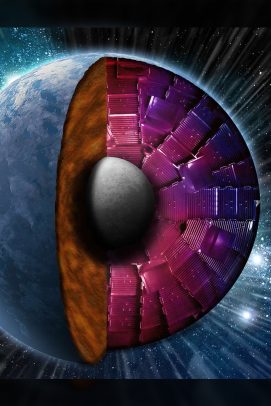Measuring the melting curve of iron at super-Earth core conditions

A new study appearing in Science suggests that Earth-like planets outside of the solar system are likely to have a longer duration of magnetically shielded habitability than Earth.
University of Illinois Chicago professor Russell Hemley and scientists at Lawrence Livermore National Laboratory, along with other collaborators, sought to determine the high-pressure melting curve and structural properties of iron up to 1,000 GPa (nearly 10,000,000 atmospheres), which is three times the pressure of Earth’s inner core and nearly four times greater pressure than previous experiments conducted on the material.
The melting curve — where a solid turns to a liquid — is one of the most significant changes a material can undergo, transitioning from a material with strength to one without. The temperature at which this happens depends on the pressure, and therefore depth, within a planet, and iron is the dominant core-forming material of Earth-like planets.
The experiments were conducted at Livermore’s National Ignition Facility, which is the largest laser on Earth. From their determination of the melting curve of iron, the team was able to estimate the length of dynamo action during solidification to form the hexagonal close-packed structure of the inner cores of super-Earth exoplanets.
Hemley, a College of Liberal Arts and Sciences Distinguished Chair in the Natural Sciences, was the project’s principal investigator, working with Richard Kraus, physicist at Livermore and lead author of the paper.
“In addition to the technological feat of determining melting transition and structural properties of this important planetary material at such extraordinary pressures and temperatures, the results have implications for life elsewhere in the cosmos, and in particular on exoplanet super-Earths,” said Hemley, who holds appointments in UIC’s departments of physics, chemistry, and earth and environmental sciences.
The effort at UIC was enabled by the Chicago/Department of Energy Alliance Center, which is funded by the department’s National Nuclear Security Administration.
Learn more about the findings via the Lawrence Livermore National Laboratory.
